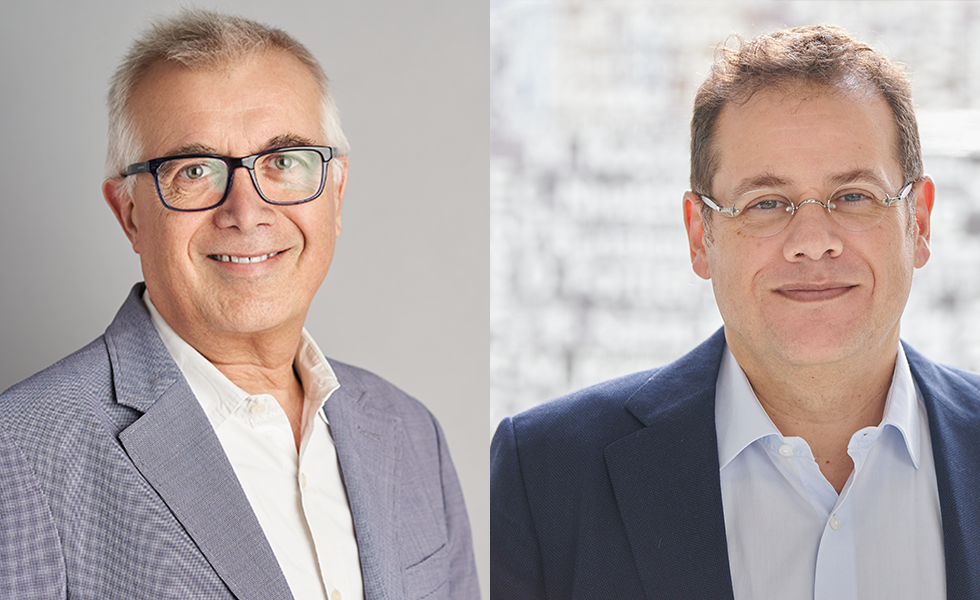
Montreal Scientists Unveil Important Advance
Research teams from the Montreal Clinical Research Institute (IRCM) and the CHU Sainte-Justine unveiled a promising advance that will help optimize the search for solutions to HIV.
Published today in the Stem Cell Report journal, this work resulting from a collaboration between Dr. Elie Haddad (MD / Ph.D.), clinical researcher at CHU Sainte-Justine and Dr. Éric Cohen (Ph.D), Director of the Human Retrovirology Unit at the IRCM, presents a new efficient and accessible preclinical model that will facilitate research work on HIV.
The study of a virus such as HIV requires understanding the pathogen’s specific modes of transmission, how it infects cells and how it persists despite the host’s immune responses and highly effective antiretroviral treatments. This is the work that scientists around the world have undertaken for several decades in order to counter and treat HIV. To make it possible, in vivo lab models require the use of human stem cells and fetal tissues - like the thymus- to model the infection and the viral multiplication, the persistence of HIV despite treatments, as well as the deleterious effects of the virus on bodily functions. It should also be emphasized that many of these questions cannot be fully investigated in vitro and require in vivo models that reproduce the HIV infection and disease as closely as observed in humans.
An Innovative Model
The innovative preclinical model proposed in this article (named CCST, because it is developed from cord blood and thymus collected during heart surgery) allows the recreation of a physiological and immune environment comparable to that found in humans during HIV infection. This new model has proven to be just as effective as existing models, without requiring the use of fetal tissue, as previously.
The CCST model recreates the conditions of real infections and a robust immune response, including the increased presence of T cells and their functions as usually observed in the presence of HIV in humans. Scientists were able to document the presence of silent forms of HIV in the cells event in cases of undetectable viral load following antiretroviral administration. They also observed viral resurgence after cessation of treatment, suggesting that HIV reservoirs remain latent in these laboratory models, as observed in humans.
“This approach is extremely interesting because it is accessible to research teams around the world, explains Dr. Elie Haddad. It opens up a lot of research possibilities, especially in terms of finding HIV reservoirs, which is imperative to achieve a complete cure for HIV. "
While the availability of needed biological material is an important factor in favour of the CCST approach, other elements contribute to the enthusiasm CCST generates for HIV research. In addition to being available in quantity, and easily retrievable by surgery, the biological samples it requires can also easily be stored in biobanks or by cryopreservation until needed. This is a great improvement in terms of access, feasibility and flexibility for those studying HIV infection and developing therapeutic options.
“HIV remains a major threat to humans because patients needed lifetime medication to survive," said Dr. Eric Cohen. That is why we must continue the global search for a cure. Important advances and new study designs such as the one we are proposing are an important step in this direction.”
HIV, an Ongoing Threat
Until the end of the last century, the spectre of HIV was terrifying to the public as it implied a painful and certain death. Then, the arrival of antiretroviral drugs made it possible for people with HIV to lead relatively normal lives without transmitting the disease, thanks to an undetectable viral load.
However, the effectiveness of these treatments often depends on early diagnosis and their interruption leads to a rapid development of the disease. In addition, for many people around the world, especially those living in developing countries, these treatments remain more or less accessible. Finally, although current antiretroviral treatments are effective in preventing the progression of the infection and its transmission, these treatments are not curative.
Today, reports from the World Health Organization (WHO) reveal that progress made to counter HIV are faltering. In 2019, the WHO Global Health Observatory estimated that 38 million people worldwide were living with HIV. In Canada, in 2018, Health Canada estimated that an average of 62,050 people across the country were living with HIV, and that 1 in 8 Canadians with HIV was undiagnosed and unaware of their illness.
These findings underscore the importance of this work, which is the result of a successful collaboration between two leading research centres.
Read the full article
Acknowledgements
This work was supported by grants from the Canadian Institutes of Health Research (CIHR) and the Canadian Consortium for HIV Cure Research (CanCure). Dr. Haddad also holds the Bank of Montreal Research Chair in Pediatric Immunology, Sainte-Justine UHC Foundation.




